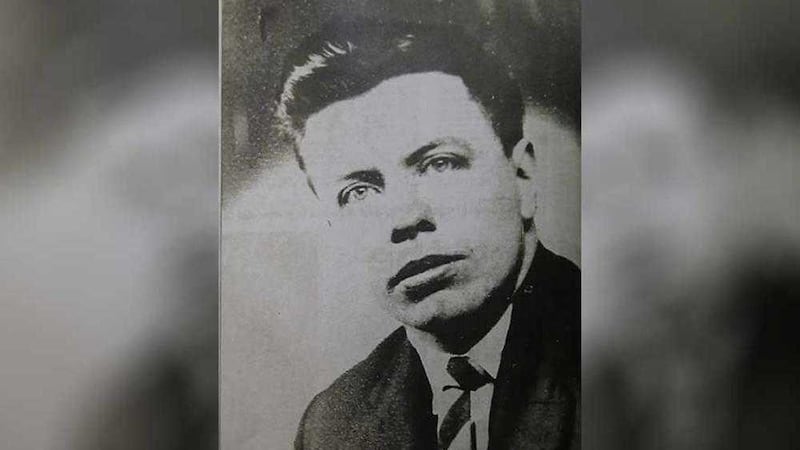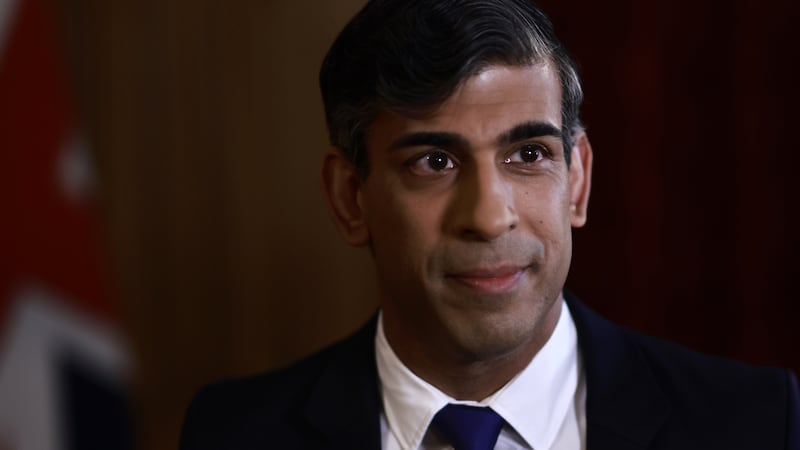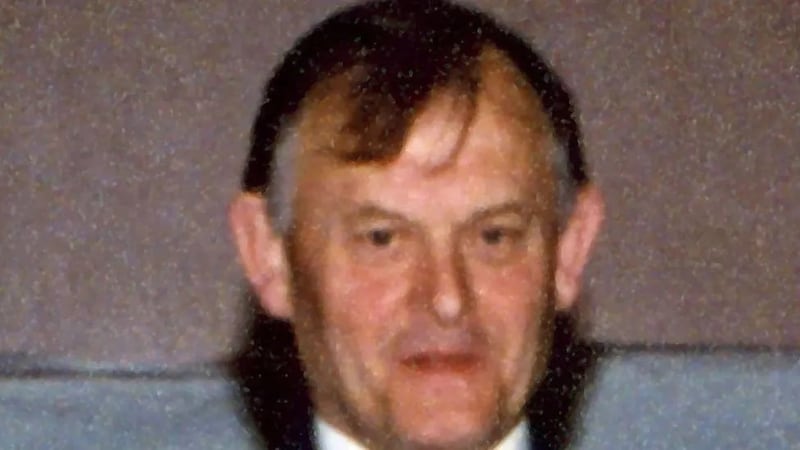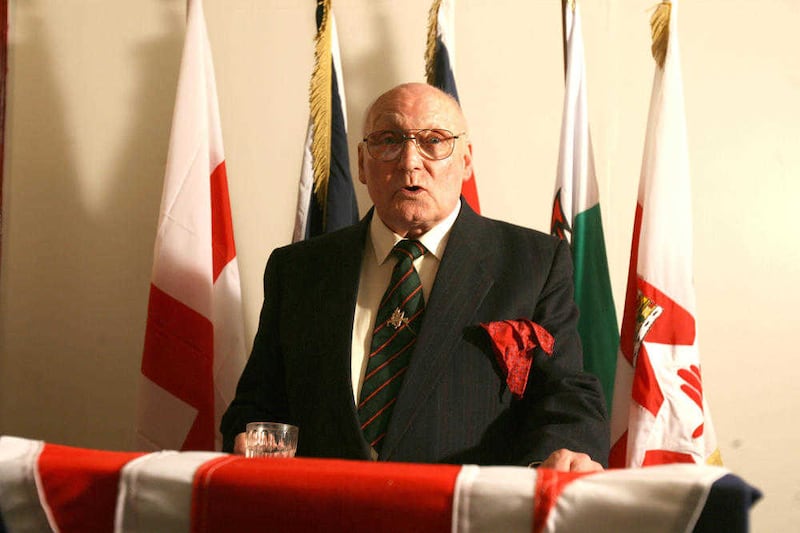THERE have been calls for a fresh investigation into the death of the first victim of the Troubles who was shot by the UVF 50 years ago on Friday.
The murder of Catholic man John Scullion marked the beginning of a vicious sectarian killing campaign by the emerging loyalist group half a century ago.
For weeks after the killing the RUC claimed the 28-year-old had been stabbed, sparking claims they were also involved in a cover-up.
Mr Scullion was shot at the door of his home at Oranmore Street in the Clonard area of west Belfast at around 11.30pm on May 27 1966.
He died two weeks after the attack by a UVF gang led by Gusty Spence.
Spence, who died in 2011, was said to have opened fire on the innocent storeman as he made his way home from a nearby pub.
After the attack neighbours told police they had heard two shots.
It has now emerged that a shell found at the scene was handed to RUC investigators the following morning.
Despite this police insisted up until his death on June 11 that Mr Scullion had been stabbed.
It was only after his remains were exhumed and re-examined that it was established that the victim had in fact been shot.
He was later reinterred and his headstone engraved with the words "Murdered for his faith".
Mr Scullion's former neighbour Brian O’Riordan, who heard the shots being fired, said another resident found a bullet shell the next day.
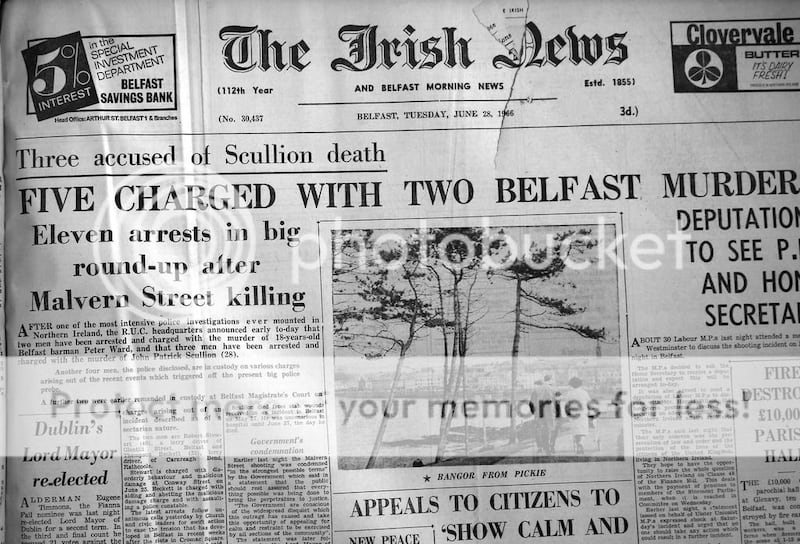
“It was a Friday night and that was the first time we had heard shots. We went out and the street was empty,” he said.
“The next door neighbour, he picked up a bullet shell and handed it to the police.
"They story was he had been knifed. They even said that in the hospital.”
Now aged 84, Mr O’Riordan believes his neighbour was simply in the wrong place at the wrong time.
“I heard two shots, two sharp cracks,” he said.
“They were just looking for anybody who happened to be in the street.
“I could have been walking up the street and they could have got me.”
The shooting signalled the emergence of the paramilitary group which claimed the name of the Ulster Volunteer Force, which had been formed in 1913 by unionists to resist Home Rule.
Within weeks of the Scullion murder two other people had died at the hands of the Shankill Road-based gang - Catholic man Peter Ward, and Protestant pensioner Matilda Gould, who was killed by mistake.
Mr Ward was shot dead after he and several friends left the Malvern Bar on the Shankill Road on June 26.
Ms Gould (77) died a day later, seven weeks after being badly burned when the UVF fire-bombed her home in the Shankill Road area.
She lived next door to a Catholic-owned bar and off licence, which the gang had intended to torch.
Mr Scullion was an only child whose mother had died when he was 14.
He was living with his elderly father, who was blind, and an aunt, Alice Scullion, at the time he was shot.
The UVF killers struck as he made his way home from the Conway Bar in Milford Street, off the Falls Road.
It was reported that he was heard to sing ‘The Sash’ as he made the short trip.
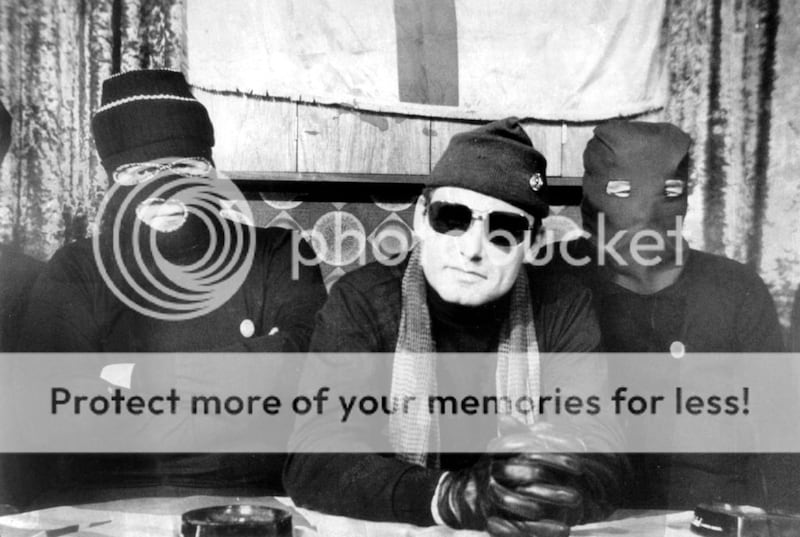
Gusty Spence (centre) during an appearance on ITV's World In Action
It is believed the shots were fired from a car which drew up alongside him as he stood at the front door of his home.
Alice found her nephew at her front door and he was able to follow her upstairs before collapsing.
He was brought to hospital and while being treated there suffered several cardiac arrests.
Mr Scullion eventually died on June 11 from brain damage that had been precipitated by a final heart attack.
On hearing of his death his father knelt down and prayed for the killers.
Although several people in the Clonard area heard gunshots and saw the killers' car on the night he was hit, the RUC continued to claim he had been stabbed.
Before and after his remains were exhumed an anonymous caller to a Belfast newspaper claimed that he was shot by an extreme Protestant organisation.
Former neighbour Gerard McCartney, who was 10 when the attack took place, said his mother Maureen also heard the shots.
He said local people were stunned by the killing.
“There was a lot of shock in the area,” he said.
“It was the start of the shootings back then and it was obvious it had been a sectarian shooting."
Shankill loyalist Gusty Spence was one of three men accused of the murder but the charges were later dropped.
The other two men pleaded guilty to a charge of “unlawfully concealing the commission of the murder by Augustus Spence” after prosecutors claimed they had been in the car when Spence fired two shots at Mr Scullion. They were jailed for four years.
One of the men claimed to police that the gang had travelled to the Falls Road area to shoot a man they believed was a member of the IRA.
It was at this point they encountered Mr Scullion, who he claimed shouted "Up the Republic, up the rebels".
After failing to shoot their intended target the gang were said to have cruised several side streets off the Falls Road and eventually come across the 28-year-old for a second time as he tried to open the front door of his home.
Spence then ordered the driver to stop and opened fire through the driver's window.
"We had nothing against him, it was because he shouted 'Up the rebels'," the statement said.
Spence was eventually convicted for his part in the killing of Peter Ward and served 18 years behind bars.
He always denied any part in the murders.
The spate of sectarian attacks took place after republicans had marked the 50th anniversary of the Easter Rising with several large parades through west Belfast.
Historian Brian Feeney, who is originally from Clonard, said the murder sent shockwaves through the nationalist area.
“It was an absolutely enormous shock,” he said. “Nothing like that had happened for years.
“There was serious rioting in ’64 but there was no shooting.
“It was a profound jolt and this happened out of the blue.
“People were thinking there was some sort of personal dispute and then it emerged it was a UVF murder gang.”
The killings also took place at a time when Unionist Prime Minister Terence O’Neill was attempting to introduce reforms and build better relations with the Republic.
Unionist paranoia had been growing since the end of the IRA’s 'Operation Harvest' border campaign in 1962.
Tensions were further stoked in 1964 when the RUC attempted to remove a tricolour from the window of a Sinn Féin office at Divis Street in west Belfast, sparking serious rioting.
All these factors collided at a time when former DUP leader Ian Paisley was forming the Ulster Protestant Volunteers.
Mr Feeney believes there was cross-over between the UVF and UPV and that both were committed to blocking any of O'Neill's reforms.
“The UPV and the UVF were simply out to intimidate Catholics and keep them in their place and say you can’t demonstrate any Irishness," he said.
“The UPV was synonymous with the UVF in parts of Belfast.”
Robert McClenaghan, who is a member of the McGurk's Bar Memorial Committee, believes the case needs to be re-investigated.
His grandfather, Philip Garry, was one of 15 Catholics killed in the UVF's McGurk's Bar bombing in north Belfast in 1971.
He said there are parallels between the cases.
"Eyewitnesses reported shots being fired and a spent cartridge was found on the ground and given to the police," he said.
"The man was shot in the foot and the chest and yet the RUC concocted this story that they think he was stabbed.
"This is not rocket science, this is all documented.
"In the same way they they tried to tell the families there was no UVF murder gang involved in McGurk's Bar."
